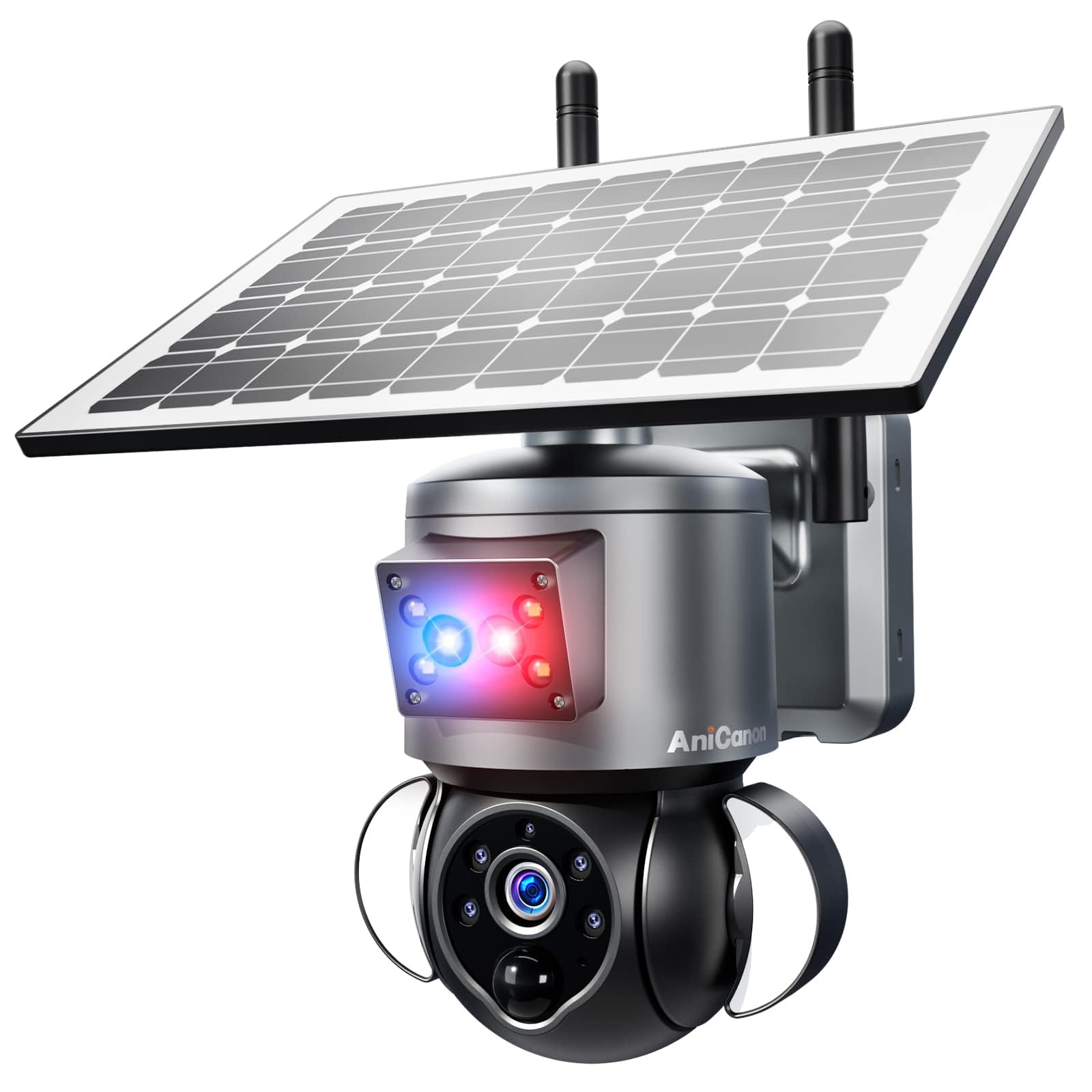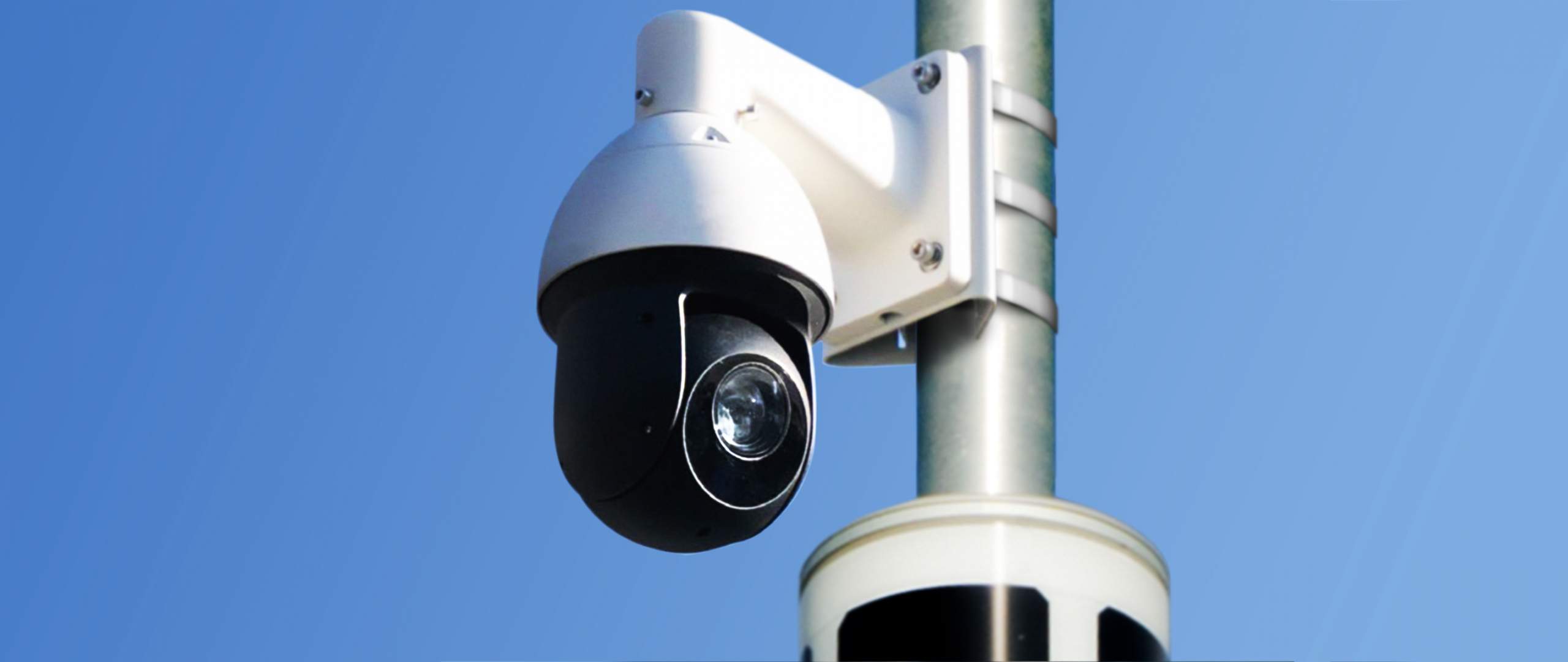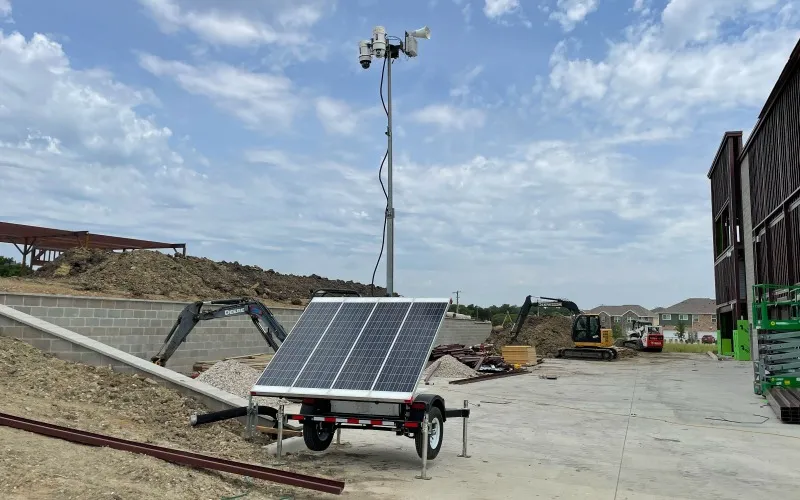Solar Surveillance Cameras: Harnessing Sunlight for Security

Solar surveillance cameras are gaining popularity. They offer reliable security without the need for electrical wiring.
Imagine a surveillance system that never loses power. Solar surveillance cameras harness the sun’s energy, providing continuous monitoring even in remote locations. These cameras are ideal for areas with limited access to electricity, such as rural properties, construction sites, and farms.
They are eco-friendly, reducing your carbon footprint while enhancing security. With advancements in technology, solar cameras now offer high-quality video, night vision, and motion detection. They are easy to install and maintain, making them a smart choice for anyone looking to improve security without increasing energy costs. Discover how solar surveillance cameras can benefit you and why they are becoming a preferred option for many.
Introduction To Solar Surveillance Cameras
Solar surveillance cameras are transforming the security industry. These cameras harness solar energy, providing a reliable and sustainable solution for monitoring. As concerns about environmental impact grow, more people are turning to renewable energy sources. Solar-powered security devices are among the top choices.
Growing Demand For Renewable Energy
The demand for renewable energy is rising globally. People are more aware of their carbon footprint. Traditional energy sources are depleting. Solar energy is abundant and clean. It reduces reliance on fossil fuels. Solar surveillance cameras fit perfectly into this eco-friendly trend.
Benefits Of Solar-powered Security
Solar-powered security cameras offer numerous benefits. They are easy to install. No need for complex wiring. They work in remote areas. Solar panels charge batteries during the day. The cameras operate even in low-light conditions.
These cameras are cost-effective. They save on electricity bills. Maintenance costs are low. Solar surveillance cameras provide reliable monitoring. They help keep properties safe. They are a smart choice for security solutions.
How Solar Surveillance Cameras Work
Solar surveillance cameras are an innovative solution for security. They harness solar energy to function without relying on conventional power sources. Understanding how these cameras work can help you appreciate their benefits and efficiency.
Solar Panels And Energy Storage
Solar panels are the core component of solar surveillance cameras. They capture sunlight and convert it into electrical energy. This energy powers the camera and other components.
Energy storage systems, like batteries, store excess energy. This stored energy ensures the camera operates during nighttime or cloudy days. The combination of solar panels and storage makes the system reliable.
Integration With Security Systems
Solar surveillance cameras integrate seamlessly with existing security systems. They connect wirelessly to monitoring stations or cloud services. This allows remote access to live feeds and recorded footage.
Many solar cameras come with motion detection features. These features alert users to suspicious activities. Integration with alarms and notifications enhances security.
Key Features Of Solar Surveillance Cameras
Solar surveillance cameras have become a popular choice for security. They offer a range of features that make them stand out. These cameras work well in areas without power access. They are eco-friendly and cost-efficient. Let’s explore the key features that make solar surveillance cameras a top choice for many users.
Wireless Connectivity
Solar surveillance cameras often come with wireless connectivity. This means no need for extensive wiring. The cameras use Wi-Fi or cellular networks to transmit data. This setup is easy to install and maintain. Wireless connectivity allows for remote access. Users can monitor their property from anywhere with an internet connection.
High-resolution Imaging
High-resolution imaging is a crucial feature of solar surveillance cameras. These cameras capture clear and detailed images. This makes it easier to identify faces and objects. High-resolution imaging is vital for effective surveillance. It enhances the security of your property.
Installation And Setup
Installing and setting up solar surveillance cameras can be straightforward. It involves site selection, panel placement, and connecting to monitoring systems. This guide will walk you through each step to ensure your cameras operate efficiently.
Site Selection And Panel Placement
Choose a spot with ample sunlight throughout the day. Avoid areas with heavy shade. Consider the camera’s field of view. Ensure it covers the desired surveillance area. Mount the solar panel facing south in the northern hemisphere. In the southern hemisphere, face it north. Adjust the tilt angle based on your location’s latitude.
Connecting To Monitoring Systems
Most solar surveillance cameras connect wirelessly. Follow the manufacturer’s instructions for Wi-Fi setup. Ensure your camera has a strong signal. Use range extenders if needed. Link the camera to your preferred monitoring app or software. Test the connection to ensure real-time surveillance. Regularly check for software updates to maintain security and efficiency.
Advantages Over Traditional Cameras
Solar surveillance cameras have several advantages over traditional cameras. They are not just about capturing images. These cameras offer benefits that make them more appealing and practical for various uses.
Cost-effectiveness
One of the main advantages of solar surveillance cameras is cost-effectiveness. Traditional cameras often need extensive wiring and a constant power supply. This can be expensive over time. Solar cameras, on the other hand, harness the power of the sun. This reduces electricity bills significantly.
| Traditional Cameras | Solar Cameras |
|---|---|
| High installation costs | Lower installation costs |
| Ongoing electricity costs | No electricity costs |
| Wiring and maintenance expenses | Minimal maintenance |
With solar surveillance cameras, you save on both installation and operational costs. The initial investment might be higher, but the long-term savings are substantial. This makes them a wise financial choice.
Environmental Impact
Another important advantage is the positive environmental impact. Traditional cameras rely on electricity from the grid. This often comes from non-renewable sources. Solar cameras use renewable energy from the sun.
- Reduces carbon footprint
- Promotes sustainable energy use
- Less dependency on fossil fuels
Using solar surveillance cameras helps in reducing the carbon footprint. This is crucial for protecting the environment. By choosing solar, you contribute to a greener planet.
These cameras also work in remote areas where electricity is not available. This makes them versatile and useful in various locations. They are ideal for farms, construction sites, and other off-grid places.
In summary, the cost-effectiveness and environmental benefits make solar surveillance cameras a smart choice. They offer a sustainable and economical solution to security needs.

Credit: soluxio.lighting
Challenges And Limitations
Solar surveillance cameras offer many benefits, including environmental sustainability and reduced energy costs. But they also come with their own set of challenges and limitations. Understanding these issues can help users make informed decisions about their surveillance needs.
Weather Dependency
Solar surveillance cameras rely on sunlight to function effectively. In regions with consistent sunlight, these cameras perform well. But in areas with prolonged cloudy or rainy weather, their performance can suffer. Lack of sufficient sunlight can lead to power shortages, affecting the camera’s ability to record footage.
During winter months, shorter daylight hours can further limit the camera’s efficiency. Snow accumulation on solar panels can also block sunlight, reducing the camera’s power supply. Regular maintenance to clear snow and debris is essential to ensure optimal performance.
Initial Installation Costs
The initial installation costs of solar surveillance cameras can be high. This includes the price of the camera, solar panels, batteries, and other necessary equipment. Professional installation may also add to the cost. For many, this upfront investment can be a barrier.
Let’s look at a comparison of costs:
| Component | Average Cost |
|---|---|
| Solar Surveillance Camera | $200 – $500 |
| Solar Panels | $100 – $300 |
| Batteries | $50 – $150 |
| Installation Fees | $100 – $300 |
Despite the high initial costs, the long-term savings on energy bills and the environmental benefits can offset these expenses over time.
Applications Of Solar Surveillance Cameras
Solar surveillance cameras are gaining popularity. Their unique features make them suitable for various applications. These cameras are powered by solar energy. This means they can work in remote areas without electricity. Let’s explore some common applications.
Residential Security
Homeowners use solar surveillance cameras for residential security. These cameras can be installed easily. They do not need any wiring. This makes them ideal for monitoring large properties. Cameras placed in strategic locations can cover all entry points. They also offer night vision to capture clear images in the dark.
Solar cameras are cost-effective. They reduce the need for frequent maintenance. They are also environmentally friendly. This appeals to homeowners who want to reduce their carbon footprint.
Commercial And Industrial Use
Businesses and industries benefit greatly from solar surveillance cameras. They can be installed in parking lots, warehouse perimeters, and construction sites. These cameras help in monitoring employee activities and preventing theft.
Solar surveillance cameras can work in harsh environments. They are weatherproof and can withstand extreme temperatures. This makes them reliable for industrial areas. Here is a simple table to highlight their benefits:
| Feature | Benefit |
|---|---|
| Wireless Installation | Quick and easy setup |
| Solar Powered | Reduces energy costs |
| Weatherproof | Works in any condition |
Using solar surveillance cameras helps in reducing operational costs. They are a smart investment for any business.

Credit: www.amazon.com
Future Trends In Solar Surveillance
Solar surveillance cameras are transforming the security landscape. They offer a reliable, eco-friendly solution for monitoring properties. The future of solar surveillance looks promising with many advancements on the horizon.
Advances In Solar Technology
Solar technology is improving rapidly. Solar panels are becoming more efficient. They can now capture more energy from the sun. This means solar cameras can operate for longer periods. Even during cloudy days, they work effectively.
Battery storage is also advancing. New batteries store more energy and last longer. This ensures that solar surveillance cameras stay powered throughout the night. Improved solar technology makes these cameras more reliable and effective.
Integration With Smart Home Systems
Solar surveillance cameras are increasingly compatible with smart home systems. Integration with smart home devices allows for seamless operation. Users can control their cameras through their smart home hub. This makes managing home security easier.
Voice assistants like Alexa and Google Assistant can control these cameras. With simple voice commands, users can check their camera feed. This integration enhances the convenience and usability of solar surveillance cameras.

Credit: www.wcctv.com
Frequently Asked Questions
How Do Solar Surveillance Cameras Work?
Solar surveillance cameras work by converting sunlight into electricity through solar panels. This powers the camera and its components.
Are Solar Surveillance Cameras Effective At Night?
Yes, solar surveillance cameras are effective at night. They often come with built-in batteries and infrared LEDs for night vision.
Do Solar Cameras Need Constant Sunlight?
No, solar cameras don’t need constant sunlight. They store energy in batteries, which power the cameras during cloudy days or at night.
How Long Do Solar Camera Batteries Last?
Solar camera batteries usually last between 2 to 3 years. Regular maintenance and optimal conditions can extend their lifespan.
Conclusion
Solar surveillance cameras offer many benefits. They use renewable energy and reduce costs. Easy installation makes them convenient. These cameras work well in remote areas. They provide constant security. Solar power ensures reliability. These systems are eco-friendly. They help protect our environment.
Choose solar surveillance for a sustainable future. Safe, efficient, and green.
